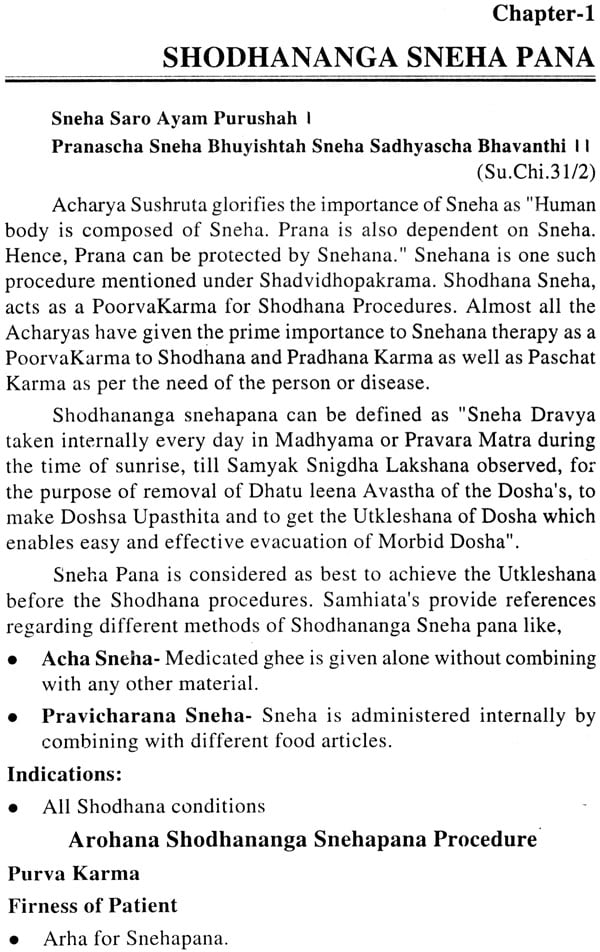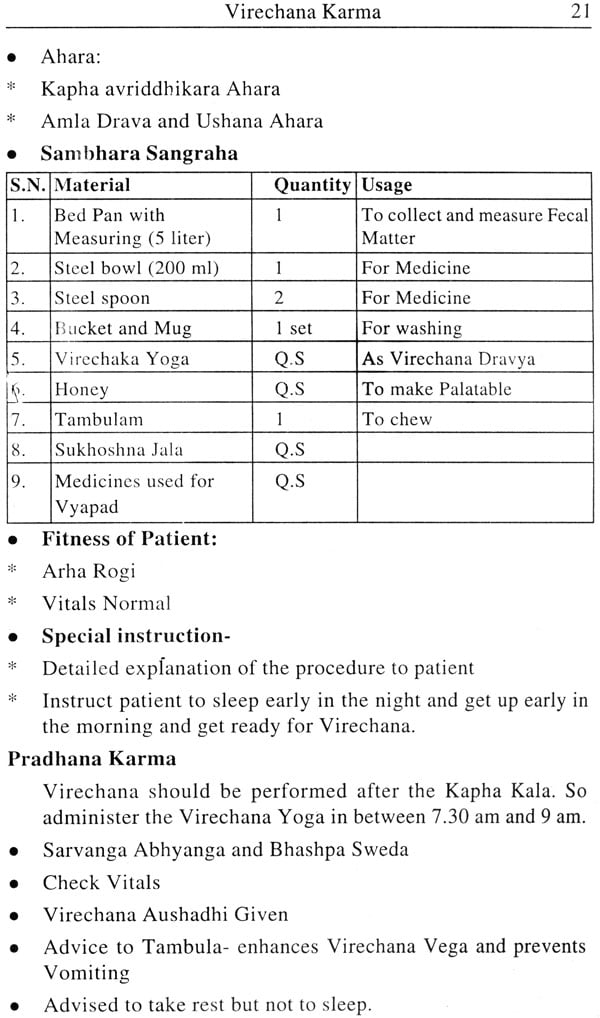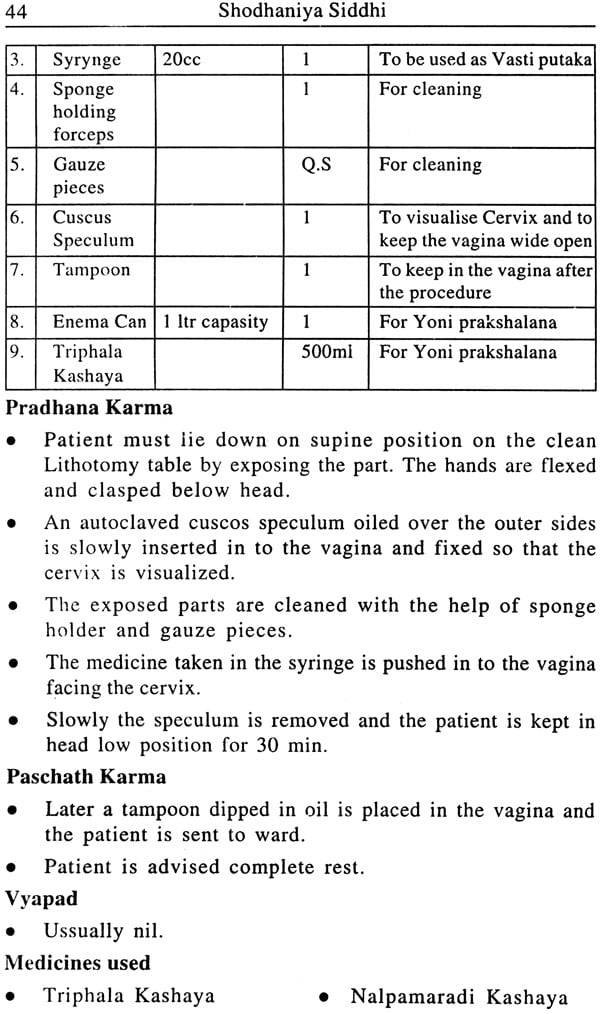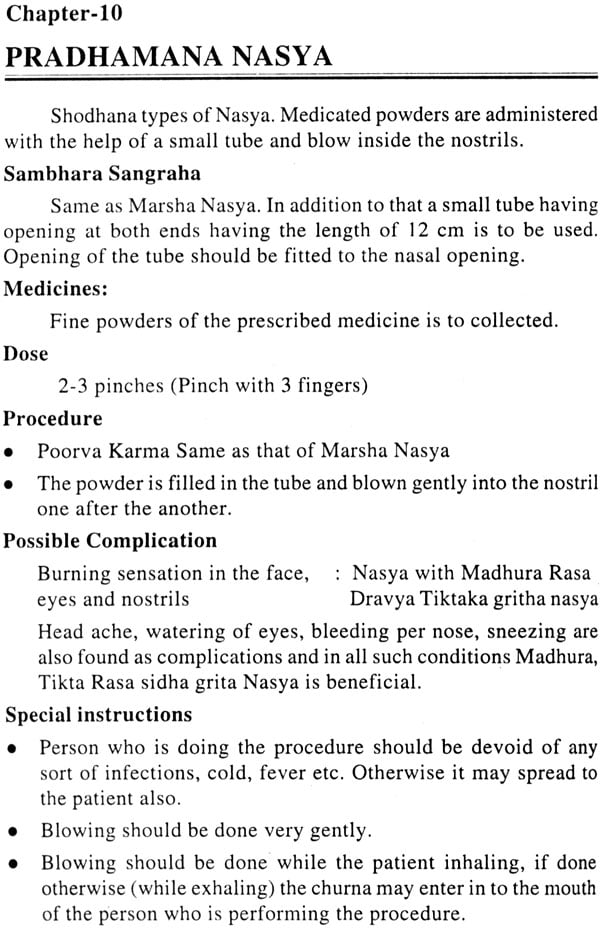
Shodhaniya Siddhi (Practical Guidelines to Shodhana Chikitsa)
Book Specification
| Item Code: | NAK795 |
| Author: | Dr. Om Prakash Sharma |
| Publisher: | Chaukhambha Orientalia |
| Language: | English |
| Edition: | 2015 |
| ISBN: | 9788176373340 |
| Pages: | 68 |
| Cover: | Paperback |
| Other Details | 8.5 inch X 5.5 inch |
| Weight | 90 gm |
Book Description
Presently working as Associate Professor of Post Graduate department of Panchakarma at National institute of Ayurveda, Jaipur. Dr. Sharma's talks were broadcasted regularly on All India Radio, Jaipur, for a long tenure of 20 years. He was honored by various organizations for his valuable services and nominated by Government of India for WHO fellowship in Beijing for 12 weeks of successful completion of the 136th international Accupuncture course at China International Accupuncture center. His articles have been published in various Peer reviewed Journals and also Participated in various National and International seminars and delivered Valuable lectures.
Ayurveda is becoming more popular throughout the world. One of the main reasons for this popularity is Panchakarma. But unfortunately it is almost understood as massage or other relaxation therapies.
Ayurveda gives more emphasis to elimination of toxins from the body than to relaxation techniques alone. Body tends to accumulate toxins by food and the other activities in a periodical and cyclic way.
How much ever careful we may be, the influence of seasons, improper food habits, mental stress and other activities increase the toxins in the body. Hence, we are advised detoxify the body seasonally. A beautiful example is given in Ayurveda, if a crystal is kept in pure water, even though the water and the crystals are pure, if you keep the crystal in the water [or a longer duration it becomes slimy and dirty. Similarly the human body also accumulates toxins in a cyclic way over a period of time. So, even for healthy person periodical purifications are necessary to keep the body healthy. In diseased conditions also eliminative therapies are the ones which benefit the maximum. So, detoxification or eliminative therapies are given the highest importance in all treatment principles of the diseases and are described in the beginning itself.
"How to get Mastery over eliminative therapies?" Is one of the meanings of the Title of this book" Shodhaniya Siddhi". The pre- therapy procedures, the actual procedures, techniques involved in the therapies, post procedural measures are explained in a very orderly and clear manner in this book. The quantity of drugs to be used, different combinations, the preparation etc are described lucidly. The Authors of this book Dr. OP Sharma is one of the pioneer in this field, Dr. Ananth Ram Sharma and Dr. Pratibha Sharma are vastly experienced in this field and had been ably managing the Pancha Karma department of Amrita school of Ayurveda and Hospital. Whatever that is being practiced in popular institutes are given as examples with logical reasons. This book will be a great boon for all the student community of Ayurveda and all the young doctors who wish to practice Pancha Karma in their clinics. With some experience in good institutes they can use this book as a guide for their practice with confidence.
May Lord Dhanvantari shower his blessings to all the Authors for their laudable efforts.
Chikitsa in Ayurveda is mainly classified in to "Shodhana" and "Shamana" which means Purification and Palliation of Vitiated Dosha respectively. Shodhana is the method of treatment intended to expel out excessively vitiated Doshah through the nearest orifice thus eradicating the disease from its root and don't allow to reoccur. Same time Shamana is directed towards palliation of vitiated Dosas.
All the Acharyas of Ayurveda doesn't disagree with the supremacy of Shodhana over Shamana. Acharya Charaka says,
The Desha subdued by Langhana and Pacana therapies may provoke (Later), but in case of Sodhana, there is infrequent possibility of such recurrence (Ca. Su. 6: 20).
Shodhana Therapy is the unique specialty of Ayurveda which contemporary Medical science can't be claimed in to its credit. Dosha Shodhana is achieved mainly through the wise application of Panchakarma Therapy viz. Vamana, Virecana, Asthapana Vasti, Anuvasana Vasti and Nasya Karma. Main Indication of Shodhana Panchakarma is the Bahudosha Avastha and Upasthitatwa. Here Bahu Dosha means Large quantity of morbid Dosha capable of producing spectrum of diseases and Upastitatwa means; detaching the Dosha from Dhatus and from Shakhas and bring them to the Koshtha. Panchakarma are also used in Swastha for Ritu Shodhana as a preventive measure and Poorva Karma to Rasayana Vidhi as a measure of Positive Health promotion. (Ca. Su. 7/46, Ca. Su. 16/ 12-19, Ca. Ci. 1/1-24).
Even though these much weight is given to Panchakarma/Shodhana, many Practitioners in the country are not feel ease to advocate Shodhana to their Patients. Reason behind this may be lack of experience, Fear of complications and lack of instant practical guidelines. Even though entire world is look forward to Ayurveda for its excellence in Shodhana, response from our fellow Vaidyas are not encouraging. Most of the practitioners and Ayurveda centers in the country are concentrating mainly on the Poorva Karma of the Shodhana like Snehana Swedana etc. Guidelines regarding these therapies are available plenty in number. But there is a lacuna of clear and detailed Practical guideline for the Shodhana procedures. This small effort made by us indented to fill this lacuna. We feel that "Shodhaniya Siddhi" practical guidelines on Shodhana/Panchakarma generated from our years long Practical expertise on Panchakarma will be accepted whole heartedly by the Ayurveda community.
| S.NO. | Chapter | Page |
| 1 | Shodhananga Sneha Pana | 1 |
| 2 | Vamana Karma | 7 |
| 3 | Virechana Karma | 19 |
| 4 | Vasti Karma | 25 |
| 5 | Sneha Vasti | 27 |
| 6 | Asthapana Basti | 31 |
| 7 | Uttara Vasti | 40 |
| 8 | Nasya Karma | 50 |
| 9 | Avapeedaka Nasya | 55 |
| 10 | Pradhamana Nasya | 56 |
| 11 | Samsarjana Karma | 57 |









